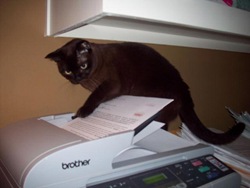
It’s hard to know how often confidential files continue to be sent to incorrect destinations or unsecure areas. The individual that I was speaking with mentioned that he was recently working in one of their regional offices. When he went to the copier to pick up his work he found payroll information that had been mistakenly faxed to their public fax machine from a local law firm! The nature of analog and digital fax technology lends itself to human error; errors that can have a devastating impact on a company’s image.
With the current security conscious business environment it is necessary for companies of all sizes to identify weaknesses within their document workflow process. One way to reduce risk is to encrypt your files so you control them no matter their location. Encrypted files can be either hosted in a secure location or be sent directly to the recipient(s). Fax machines have their place in business, but can cause problems when you aren’t sure of the number or when automated processes are involved. Making sure you send your confidential information to the right person can be the difference between an order and a lawsuit.
How do you send confidential information?
Photo credit Burmese Cats

